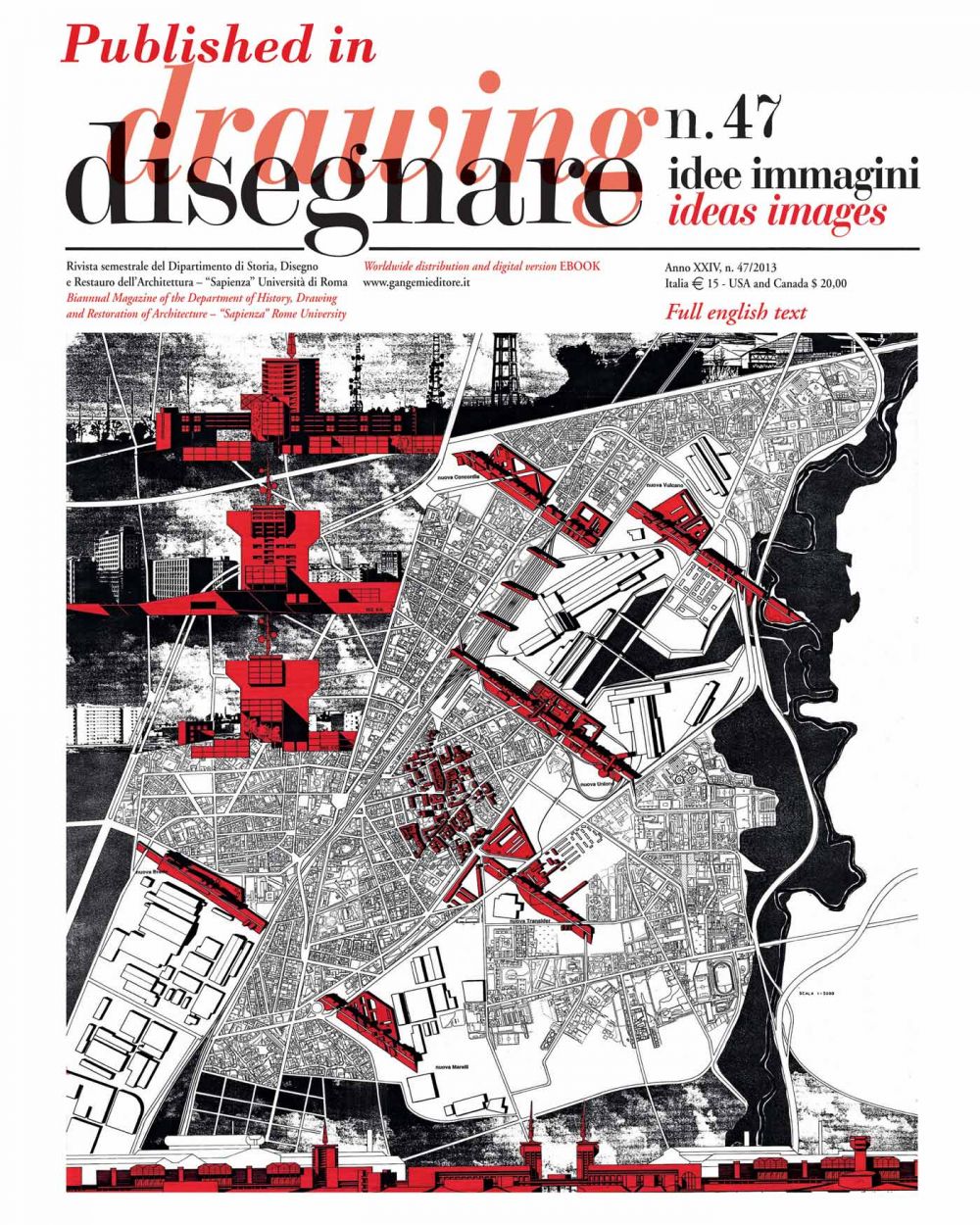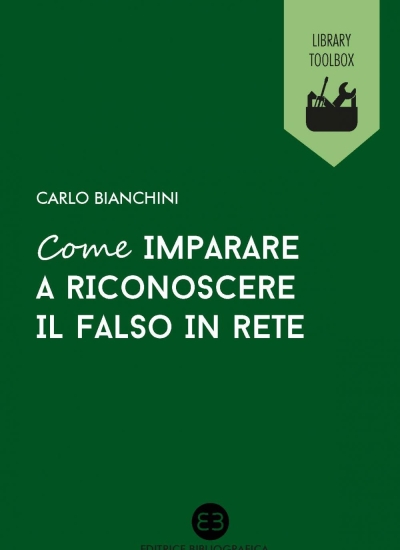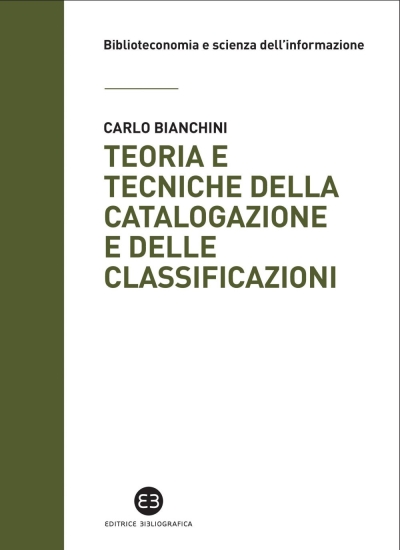Il Rilievo come Sistema di Conoscenza: la Casa dei Cavalieri di Rodi | Survey as a Knowledge System: the House of the Knights of Rhodes
Published in Disegnare idee immagini 47/2013. Rivista semestrale del Dipartimento di Storia, Disegno e Restauro dell’Architettura “Sapienza” Università di Roma | Biannual Magazine of the Department of History, Drawing and Restoration of Architecture
Autore:
Editore:
Anno:
2015
ISBN:
9788849216448
DRM:
Adobe (The downloaded file has the .acsm extension and is converted into the purchased format upon installation on your eReader)
Autore:
Editore:
Anno:
2015
ISBN:
9788849216448
DRM:
Adobe (The downloaded file has the .acsm extension and is converted into the purchased format upon installation on your eReader)
Description
Lo studio e l’interpretazione della cosiddetta Architettura Archeologica è generalmente un compito difficile: essa mostra configurazioni piuttosto stratificate e spesso pesantemente restaurate, risultato di secoli di interventi. Il rilievo rappresenta uno dei maggiori strumenti per investigare in profondità la natura di tali artefatti in virtù della sua attitudine a metterli in luce relazionati nel loro contesto e della possibilità di rendere maggiormente comprensibile la sequenza delle diverse trasformazioni, con il fondamentale apporto della documentazione esistente sull’edificio, iconografica e bibliografica. La consistenza attuale della Casa dei Cavalieri di Rodi al Foro di Augusto è il risultato di una stratificazione millenaria, rappresentando un caso di studio emblematico; tuttavia di essa non esiste una documentazione recente e sistematica. Gli studi parziali sulla sua parte archeologica, integrante e rilevante dei Fori Imperiali, hanno negli ultimi anni ricevuto un nuovo significativo impulso da alcune recenti campagne di scavi, stimolando una ripresa degli studi sul complesso nella sua interezza. | The study and interpretation of so-called Archaeological Architecture is normally a very difficult task: it usually involves rather stratified and often heavily restored configurations, the end result of years of alterations. Surveys are one of the best ways to comprehensively examine the nature of these artefacts because surveys can not only place them in context, but can also further clarify the sequence of these transformations based on key input provided by iconographic and bibliographic documents about the building. The House of the Knights of Rhodes in the Forum of Augustus as we see it today is the result of centuries-old stratifications, and is indeed emblematic: nevertheless, we do not have up-to-date, well-organized documentation about the House. The partial studies of its important and significant archaeological position in the Imperial Forums have recently taken on new meaning thanks to fresh excavation campaigns. In turn this has led to the launch of several studies on the whole complex.
Tags
Tags:
Tags:
By the same author
IL RILIEVO COME SISTEMA DI CONOSCENZA: LA CASA DEI CAVALIERI DI RODI | SURVEY AS A KNOWLEDGE SYSTEM: THE HOUSE OF THE KNIGHTS OF RHODES
Published in Disegnare idee immagini 47/2013. Rivista semestrale del Dipartimento di Storia, Disegno e Restauro dell’Architettura “Sapienza” Università di Roma | Biannual Magazine of the Department of History, Drawing and Restoration of Architecture
Published in Disegnare idee immagini 47/2013. Rivista semestrale del Dipartimento di Storia, Disegno e Restauro dell’Architettura “Sapienza” Università di Roma | Biannual Magazine of the Department of History, Drawing and Restoration of Architecture
4.99 €
39
-41
 IL RILIEVO COME SISTEMA DI CONOSCENZA: LA CASA DEI CAVALIERI DI RODI | SURVEY AS A KNOWLEDGE SYSTEM: THE HOUSE OF THE KNIGHTS OF RHODES
Published in Disegnare idee immagini 47/2013. Rivista semestrale del Dipartimento di Storia, Disegno e Restauro dell’Architettura “Sapienza” Università di Roma | Biannual Magazine of the Department of History, Drawing and Restoration of Architecture
IL RILIEVO COME SISTEMA DI CONOSCENZA: LA CASA DEI CAVALIERI DI RODI | SURVEY AS A KNOWLEDGE SYSTEM: THE HOUSE OF THE KNIGHTS OF RHODES
Published in Disegnare idee immagini 47/2013. Rivista semestrale del Dipartimento di Storia, Disegno e Restauro dell’Architettura “Sapienza” Università di Roma | Biannual Magazine of the Department of History, Drawing and Restoration of Architecture
Carlo Bianchini, Gangemi Editore
 IL RILIEVO COME SISTEMA DI CONOSCENZA: LA CASA DEI CAVALIERI DI RODI | SURVEY AS A KNOWLEDGE SYSTEM: THE HOUSE OF THE KNIGHTS OF RHODES
Published in Disegnare idee immagini 47/2013. Rivista semestrale del Dipartimento di Storia, Disegno e Restauro dell’Architettura “Sapienza” Università di Roma | Biannual Magazine of the Department of History, Drawing and Restoration of Architecture
IL RILIEVO COME SISTEMA DI CONOSCENZA: LA CASA DEI CAVALIERI DI RODI | SURVEY AS A KNOWLEDGE SYSTEM: THE HOUSE OF THE KNIGHTS OF RHODES
Published in Disegnare idee immagini 47/2013. Rivista semestrale del Dipartimento di Storia, Disegno e Restauro dell’Architettura “Sapienza” Università di Roma | Biannual Magazine of the Department of History, Drawing and Restoration of ArchitectureCarlo Bianchini, Gangemi Editore
4,99 €
DISEGNARE IDEE IMMAGINI N° 47 / 2013
Rivista semestrale del Dipartimento di Storia, Disegno e Restauro dell'Architettura "Sapienza" Università di Roma
Rivista semestrale del Dipartimento di Storia, Disegno e Restauro dell'Architettura "Sapienza" Università di Roma
Mario Docci,
Barbara Aterini,
Adriana Rossi,
Mohammad El-Khalili,
Nizar Al Adarbeh,
Yahya Al Shawabkeh,
Abdulraouf Mayyas,
Fabrizio Ivan Apollonio,
Simone Baldissini,
Guido Beltramini,
Maria Malvina Borgherini,
Paolo Clini,
Marco Gaiani,
Caterina Palestini,
Livio Sacchi,
Camillo Trevisan,
Carlo Bianchini,
Gaia Lisa Tacchi,
Laura Inzerillo,
Cettina Santagati
14.99 €
39
-41
 DISEGNARE IDEE IMMAGINI N° 47 / 2013
Rivista semestrale del Dipartimento di Storia, Disegno e Restauro dell'Architettura "Sapienza" Università di Roma
DISEGNARE IDEE IMMAGINI N° 47 / 2013
Rivista semestrale del Dipartimento di Storia, Disegno e Restauro dell'Architettura "Sapienza" Università di Roma
Mario Docci, Gangemi Editore
 DISEGNARE IDEE IMMAGINI N° 47 / 2013
Rivista semestrale del Dipartimento di Storia, Disegno e Restauro dell'Architettura "Sapienza" Università di Roma
DISEGNARE IDEE IMMAGINI N° 47 / 2013
Rivista semestrale del Dipartimento di Storia, Disegno e Restauro dell'Architettura "Sapienza" Università di RomaMario Docci, Gangemi Editore
14,99 €
LA DOCUMENTAZIONE DEI TEATRI ANTICHI DEL MEDITERRANEO. LE ATTIVITÀ DEL PROGETTO ATHENA A MÉRIDA
Documentation of Mediterranean Ancient Theatres. Athena's Activities in Mérida
Documentation of Mediterranean Ancient Theatres. Athena's Activities in Mérida
25.99 €
39
-41
 LA DOCUMENTAZIONE DEI TEATRI ANTICHI DEL MEDITERRANEO. LE ATTIVITÀ DEL PROGETTO ATHENA A MÉRIDA
Documentation of Mediterranean Ancient Theatres. Athena's Activities in Mérida
LA DOCUMENTAZIONE DEI TEATRI ANTICHI DEL MEDITERRANEO. LE ATTIVITÀ DEL PROGETTO ATHENA A MÉRIDA
Documentation of Mediterranean Ancient Theatres. Athena's Activities in Mérida
Carlo Bianchini, Gangemi Editore
 LA DOCUMENTAZIONE DEI TEATRI ANTICHI DEL MEDITERRANEO. LE ATTIVITÀ DEL PROGETTO ATHENA A MÉRIDA
Documentation of Mediterranean Ancient Theatres. Athena's Activities in Mérida
LA DOCUMENTAZIONE DEI TEATRI ANTICHI DEL MEDITERRANEO. LE ATTIVITÀ DEL PROGETTO ATHENA A MÉRIDA
Documentation of Mediterranean Ancient Theatres. Athena's Activities in MéridaCarlo Bianchini, Gangemi Editore
25,99 €
METODI E TECNICHE INTEGRATE DI RILEVAMENTO PER LA REALIZZAZIONE DI MODELLI VIRTUALI DELL'ARCHITETTURA DELLA CITTÀ
Ricerca COFIN 2004. Coordinatore nazionale Mario Docci
Ricerca COFIN 2004. Coordinatore nazionale Mario Docci
Emanuela Chiavoni,
Priscilla Paolini,
Luigi Affuso,
Piero Albisinni,
Claudio Alessandri,
Barbara Aterini,
Adriana Baculo,
Marcello Balzani,
Maria Teresa Bartoli,
Antonello Bello,
Carlo Bianchini,
Lorenza Bologna,
Lucia Bonanno,
Fausto Brevi,
Massimiliano Campi,
Emanuela Chiavoni,
Michela Cigola,
Roberto Corazzi,
Carmela Crescenzi,
Laura De Carlo,
Mariella Dell'Aquila,
Antonella di Luggo,
Mario Docci,
Riccardo Florio,
Elena Fossi,
Marco Gaiani,
Gabriele Guidi,
Laura Inzerillo,
Michele Inzerillo,
Alfonso Ippolito,
Marco Jaff,
Fabio Lanfranchi,
Emma Mandelli,
Lorenzo Martella,
Sara Mattei,
Giampiero Mele,
Carlo Mezzetti,
Alessandro Micucci,
Enrico Milani,
Ruggero Morichi,
Caterina Palestini,
Adriana Paolillo,
Priscilla Paolini,
Lia Maria Papa,
Assunta Pelliccio,
Sara Peluso,
Silvia Petrucci,
Maria Rita Pizzurro,
Paola Puma,
Antonella Salucci,
Salvatore Santuccio,
Marcello Scalzo,
Francesco Scirè,
Filippo Terranova,
Lycia Trapani,
Maurizio Unali,
Marcello Vannucchi,
Uliva Velo,
Giuseppe Verde
39.99 €
39
-41
 METODI E TECNICHE INTEGRATE DI RILEVAMENTO PER LA REALIZZAZIONE DI MODELLI VIRTUALI DELL'ARCHITETTURA DELLA CITTÀ
Ricerca COFIN 2004. Coordinatore nazionale Mario Docci
METODI E TECNICHE INTEGRATE DI RILEVAMENTO PER LA REALIZZAZIONE DI MODELLI VIRTUALI DELL'ARCHITETTURA DELLA CITTÀ
Ricerca COFIN 2004. Coordinatore nazionale Mario Docci
Emanuela Chiavoni, Gangemi Editore
 METODI E TECNICHE INTEGRATE DI RILEVAMENTO PER LA REALIZZAZIONE DI MODELLI VIRTUALI DELL'ARCHITETTURA DELLA CITTÀ
Ricerca COFIN 2004. Coordinatore nazionale Mario Docci
METODI E TECNICHE INTEGRATE DI RILEVAMENTO PER LA REALIZZAZIONE DI MODELLI VIRTUALI DELL'ARCHITETTURA DELLA CITTÀ
Ricerca COFIN 2004. Coordinatore nazionale Mario DocciEmanuela Chiavoni, Gangemi Editore
39,99 €
DISEGNARE IDEE IMMAGINI N° 55 / 2017
Rivista semestrale del Dipartimento di Storia, Disegno e Restauro dell'Architettura Sapienza Università di Roma
Rivista semestrale del Dipartimento di Storia, Disegno e Restauro dell'Architettura Sapienza Università di Roma
Mario Docci,
Maria Letizia Accorsi,
Lisa Accurti,
Carlo Bianchini,
Pedro M. Cabezos Bernal,
Eduardo Carazo Lefort,
Laura Carnevali,
Mario Docci,
Noella Galván Desvaux,
Carlo Inglese,
Elena Ippoliti,
Fabio Lanfranchi,
Francisco Martínez Mindeguía,
Marco Muscogiuri,
Leonardo Paris,
Marta Alonso Rodríguez,
Adriana Rossi,
Martina Trentani,
Paolo Zermani
14.99 €
39
-41
 DISEGNARE IDEE IMMAGINI N° 55 / 2017
Rivista semestrale del Dipartimento di Storia, Disegno e Restauro dell'Architettura Sapienza Università di Roma
DISEGNARE IDEE IMMAGINI N° 55 / 2017
Rivista semestrale del Dipartimento di Storia, Disegno e Restauro dell'Architettura Sapienza Università di Roma
Mario Docci, Gangemi Editore
 DISEGNARE IDEE IMMAGINI N° 55 / 2017
Rivista semestrale del Dipartimento di Storia, Disegno e Restauro dell'Architettura Sapienza Università di Roma
DISEGNARE IDEE IMMAGINI N° 55 / 2017
Rivista semestrale del Dipartimento di Storia, Disegno e Restauro dell'Architettura Sapienza Università di RomaMario Docci, Gangemi Editore
14,99 €
IL RILIEVO COME SISTEMA DI CONOSCENZA: LA CASA DEI CAVALIERI DI RODI | SURVEY AS A KNOWLEDGE SYSTEM: THE HOUSE OF THE KNIGHTS OF RHODES
Published in Disegnare idee immagini 47/2013. Rivista semestrale del Dipartimento di Storia, Disegno e Restauro dell’Architettura “Sapienza” Università di Roma | Biannual Magazine of the Department of History, Drawing and Restoration of Architecture
Published in Disegnare idee immagini 47/2013. Rivista semestrale del Dipartimento di Storia, Disegno e Restauro dell’Architettura “Sapienza” Università di Roma | Biannual Magazine of the Department of History, Drawing and Restoration of Architecture
4.99 €
39
-41
 IL RILIEVO COME SISTEMA DI CONOSCENZA: LA CASA DEI CAVALIERI DI RODI | SURVEY AS A KNOWLEDGE SYSTEM: THE HOUSE OF THE KNIGHTS OF RHODES
Published in Disegnare idee immagini 47/2013. Rivista semestrale del Dipartimento di Storia, Disegno e Restauro dell’Architettura “Sapienza” Università di Roma | Biannual Magazine of the Department of History, Drawing and Restoration of Architecture
IL RILIEVO COME SISTEMA DI CONOSCENZA: LA CASA DEI CAVALIERI DI RODI | SURVEY AS A KNOWLEDGE SYSTEM: THE HOUSE OF THE KNIGHTS OF RHODES
Published in Disegnare idee immagini 47/2013. Rivista semestrale del Dipartimento di Storia, Disegno e Restauro dell’Architettura “Sapienza” Università di Roma | Biannual Magazine of the Department of History, Drawing and Restoration of Architecture
Carlo Bianchini, Gangemi Editore
 IL RILIEVO COME SISTEMA DI CONOSCENZA: LA CASA DEI CAVALIERI DI RODI | SURVEY AS A KNOWLEDGE SYSTEM: THE HOUSE OF THE KNIGHTS OF RHODES
Published in Disegnare idee immagini 47/2013. Rivista semestrale del Dipartimento di Storia, Disegno e Restauro dell’Architettura “Sapienza” Università di Roma | Biannual Magazine of the Department of History, Drawing and Restoration of Architecture
IL RILIEVO COME SISTEMA DI CONOSCENZA: LA CASA DEI CAVALIERI DI RODI | SURVEY AS A KNOWLEDGE SYSTEM: THE HOUSE OF THE KNIGHTS OF RHODES
Published in Disegnare idee immagini 47/2013. Rivista semestrale del Dipartimento di Storia, Disegno e Restauro dell’Architettura “Sapienza” Università di Roma | Biannual Magazine of the Department of History, Drawing and Restoration of ArchitectureCarlo Bianchini, Gangemi Editore
4,99 €
DISEGNARE IDEE IMMAGINI N° 47 / 2013
Rivista semestrale del Dipartimento di Storia, Disegno e Restauro dell'Architettura "Sapienza" Università di Roma
Rivista semestrale del Dipartimento di Storia, Disegno e Restauro dell'Architettura "Sapienza" Università di Roma
Mario Docci,
Barbara Aterini,
Adriana Rossi,
Mohammad El-Khalili,
Nizar Al Adarbeh,
Yahya Al Shawabkeh,
Abdulraouf Mayyas,
Fabrizio Ivan Apollonio,
Simone Baldissini,
Guido Beltramini,
Maria Malvina Borgherini,
Paolo Clini,
Marco Gaiani,
Caterina Palestini,
Livio Sacchi,
Camillo Trevisan,
Carlo Bianchini,
Gaia Lisa Tacchi,
Laura Inzerillo,
Cettina Santagati
14.99 €
39
-41
 DISEGNARE IDEE IMMAGINI N° 47 / 2013
Rivista semestrale del Dipartimento di Storia, Disegno e Restauro dell'Architettura "Sapienza" Università di Roma
DISEGNARE IDEE IMMAGINI N° 47 / 2013
Rivista semestrale del Dipartimento di Storia, Disegno e Restauro dell'Architettura "Sapienza" Università di Roma
Mario Docci, Gangemi Editore
 DISEGNARE IDEE IMMAGINI N° 47 / 2013
Rivista semestrale del Dipartimento di Storia, Disegno e Restauro dell'Architettura "Sapienza" Università di Roma
DISEGNARE IDEE IMMAGINI N° 47 / 2013
Rivista semestrale del Dipartimento di Storia, Disegno e Restauro dell'Architettura "Sapienza" Università di RomaMario Docci, Gangemi Editore
14,99 €
BOOK NUMBER: UNO STRUMENTO PER L'ORGANIZZAZIONE DELLE COLLEZIONI
Manuale ad uso dei bibliotecari
Manuale ad uso dei bibliotecari
10.99 €
39
-41
 BOOK NUMBER: UNO STRUMENTO PER L'ORGANIZZAZIONE DELLE COLLEZIONI
Manuale ad uso dei bibliotecari
BOOK NUMBER: UNO STRUMENTO PER L'ORGANIZZAZIONE DELLE COLLEZIONI
Manuale ad uso dei bibliotecari
Carlo Bianchini, Editrice Bibliografica
 BOOK NUMBER: UNO STRUMENTO PER L'ORGANIZZAZIONE DELLE COLLEZIONI
Manuale ad uso dei bibliotecari
BOOK NUMBER: UNO STRUMENTO PER L'ORGANIZZAZIONE DELLE COLLEZIONI
Manuale ad uso dei bibliotecariCarlo Bianchini, Editrice Bibliografica
10,99 €
39
-41
 INTRODUZIONE A RDA
Linee guida per rappresentare e scoprire le risorse
INTRODUZIONE A RDA
Linee guida per rappresentare e scoprire le risorse
Mauro Guerrini, Editrice Bibliografica
 INTRODUZIONE A RDA
Linee guida per rappresentare e scoprire le risorse
INTRODUZIONE A RDA
Linee guida per rappresentare e scoprire le risorseMauro Guerrini, Editrice Bibliografica
15,99 €
39
-41
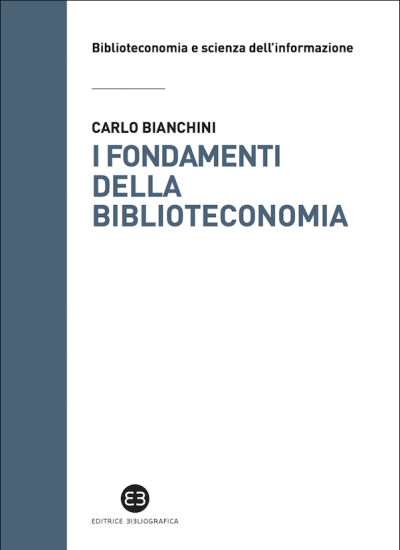 I FONDAMENTI DELLA BIBLIOTECONOMIA
Attualità del pensiero di S.R. Ranganathan
I FONDAMENTI DELLA BIBLIOTECONOMIA
Attualità del pensiero di S.R. Ranganathan
Carlo Bianchini, Editrice Bibliografica
 I FONDAMENTI DELLA BIBLIOTECONOMIA
Attualità del pensiero di S.R. Ranganathan
I FONDAMENTI DELLA BIBLIOTECONOMIA
Attualità del pensiero di S.R. RanganathanCarlo Bianchini, Editrice Bibliografica
18,99 €
DISEGNARE IDEE IMMAGINI N° 53 / 2016
Rivista semestrale del Dipartimento di Storia, Disegno e Restauro dell'Architettura Sapienza Università di Roma
Rivista semestrale del Dipartimento di Storia, Disegno e Restauro dell'Architettura Sapienza Università di Roma
Mario Docci,
Luis Agustín Hernández,
Lucio Altarelli,
Katarina Andjelkovic,
Fabrizio Ivan Apollonio,
Carlo Bianchini,
Ignacio Bosch Reig,
Ignacio Cabodevilla-Artieda,
Teresa Della Corte,
Mario Docci,
Riccardo Foschi,
Marco Gaiani,
Marta Grau Fernandez,
Francisco Martínez Mindeguía,
Antonio Saggio,
Gabriele Stancato,
Aurelio Vallespín Muniesa
14.99 €
39
-41
 DISEGNARE IDEE IMMAGINI N° 53 / 2016
Rivista semestrale del Dipartimento di Storia, Disegno e Restauro dell'Architettura Sapienza Università di Roma
DISEGNARE IDEE IMMAGINI N° 53 / 2016
Rivista semestrale del Dipartimento di Storia, Disegno e Restauro dell'Architettura Sapienza Università di Roma
Mario Docci, Gangemi Editore
 DISEGNARE IDEE IMMAGINI N° 53 / 2016
Rivista semestrale del Dipartimento di Storia, Disegno e Restauro dell'Architettura Sapienza Università di Roma
DISEGNARE IDEE IMMAGINI N° 53 / 2016
Rivista semestrale del Dipartimento di Storia, Disegno e Restauro dell'Architettura Sapienza Università di RomaMario Docci, Gangemi Editore
14,99 €
EDITORIALE – IL RUOLO DEI MODELLI VIRTUALI 3D NELLA CONSERVAZIONE DEL PATRIMONIO ARCHITETTONICO E ARCHEOLOGICO | EDITORIAL - THE ROLE OF VIRTUAL 3D MODELS IN THE CONSERVATION OF ARCHITECTURAL AND ARCHAEOLOGICAL HERITAGE
Published in Disegnare idee immagini 53/2016. Rivista semestrale del Dipartimento di Storia, Disegno e Restauro dell’Architettura “Sapienza” Università di Roma | Biannual Magazine of the Department of History, Drawing and Restoration of Architecture
Published in Disegnare idee immagini 53/2016. Rivista semestrale del Dipartimento di Storia, Disegno e Restauro dell’Architettura “Sapienza” Università di Roma | Biannual Magazine of the Department of History, Drawing and Restoration of Architecture
4.99 €
39
-41
 EDITORIALE – IL RUOLO DEI MODELLI VIRTUALI 3D NELLA CONSERVAZIONE DEL PATRIMONIO ARCHITETTONICO E ARCHEOLOGICO | EDITORIAL - THE ROLE OF VIRTUAL 3D MODELS IN THE CONSERVATION OF ARCHITECTURAL AND ARCHAEOLOGICAL HERITAGE
Published in Disegnare idee immagini 53/2016. Rivista semestrale del Dipartimento di Storia, Disegno e Restauro dell’Architettura “Sapienza” Università di Roma | Biannual Magazine of the Department of History, Drawing and Restoration of Architecture
EDITORIALE – IL RUOLO DEI MODELLI VIRTUALI 3D NELLA CONSERVAZIONE DEL PATRIMONIO ARCHITETTONICO E ARCHEOLOGICO | EDITORIAL - THE ROLE OF VIRTUAL 3D MODELS IN THE CONSERVATION OF ARCHITECTURAL AND ARCHAEOLOGICAL HERITAGE
Published in Disegnare idee immagini 53/2016. Rivista semestrale del Dipartimento di Storia, Disegno e Restauro dell’Architettura “Sapienza” Università di Roma | Biannual Magazine of the Department of History, Drawing and Restoration of Architecture
Mario Docci, Gangemi Editore
 EDITORIALE – IL RUOLO DEI MODELLI VIRTUALI 3D NELLA CONSERVAZIONE DEL PATRIMONIO ARCHITETTONICO E ARCHEOLOGICO | EDITORIAL - THE ROLE OF VIRTUAL 3D MODELS IN THE CONSERVATION OF ARCHITECTURAL AND ARCHAEOLOGICAL HERITAGE
Published in Disegnare idee immagini 53/2016. Rivista semestrale del Dipartimento di Storia, Disegno e Restauro dell’Architettura “Sapienza” Università di Roma | Biannual Magazine of the Department of History, Drawing and Restoration of Architecture
EDITORIALE – IL RUOLO DEI MODELLI VIRTUALI 3D NELLA CONSERVAZIONE DEL PATRIMONIO ARCHITETTONICO E ARCHEOLOGICO | EDITORIAL - THE ROLE OF VIRTUAL 3D MODELS IN THE CONSERVATION OF ARCHITECTURAL AND ARCHAEOLOGICAL HERITAGE
Published in Disegnare idee immagini 53/2016. Rivista semestrale del Dipartimento di Storia, Disegno e Restauro dell’Architettura “Sapienza” Università di Roma | Biannual Magazine of the Department of History, Drawing and Restoration of ArchitectureMario Docci, Gangemi Editore
4,99 €
DISEGNARE IDEE IMMAGINI N° 54 / 2017
Rivista semestrale del Dipartimento di Storia, Disegno e Restauro dell'Architettura Sapienza Università di Roma
Rivista semestrale del Dipartimento di Storia, Disegno e Restauro dell'Architettura Sapienza Università di Roma
14.99 €
39
-41
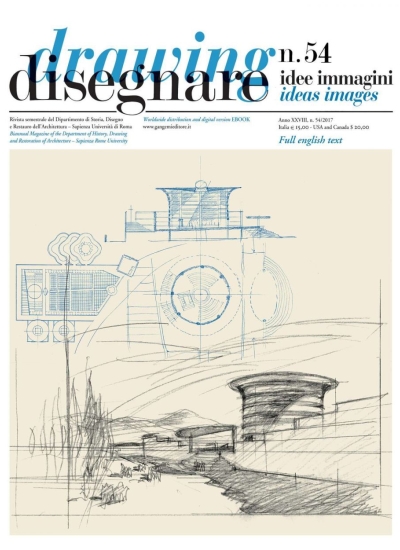 DISEGNARE IDEE IMMAGINI N° 54 / 2017
Rivista semestrale del Dipartimento di Storia, Disegno e Restauro dell'Architettura Sapienza Università di Roma
DISEGNARE IDEE IMMAGINI N° 54 / 2017
Rivista semestrale del Dipartimento di Storia, Disegno e Restauro dell'Architettura Sapienza Università di Roma
Mario Docci, Gangemi Editore
 DISEGNARE IDEE IMMAGINI N° 54 / 2017
Rivista semestrale del Dipartimento di Storia, Disegno e Restauro dell'Architettura Sapienza Università di Roma
DISEGNARE IDEE IMMAGINI N° 54 / 2017
Rivista semestrale del Dipartimento di Storia, Disegno e Restauro dell'Architettura Sapienza Università di RomaMario Docci, Gangemi Editore
14,99 €
LA QUALITÀ DELLA RICERCA SCIENTIFICA NEL SETTORE DEL DISEGNO SI PUÒ E SI DEVE MISURARE
Published in Disegnare idee immagini 54/2017. Rivista semestrale del Dipartimento di Storia, Disegno e Restauro dell’Architettura “Sapienza” Università di Roma | Biannual Magazine of the Department of History, Drawing and Restoration of Architecture
Published in Disegnare idee immagini 54/2017. Rivista semestrale del Dipartimento di Storia, Disegno e Restauro dell’Architettura “Sapienza” Università di Roma | Biannual Magazine of the Department of History, Drawing and Restoration of Architecture
4.99 €
39
-41
 LA QUALITÀ DELLA RICERCA SCIENTIFICA NEL SETTORE DEL DISEGNO SI PUÒ E SI DEVE MISURARE
Published in Disegnare idee immagini 54/2017. Rivista semestrale del Dipartimento di Storia, Disegno e Restauro dell’Architettura “Sapienza” Università di Roma | Biannual Magazine of the Department of History, Drawing and Restoration of Architecture
LA QUALITÀ DELLA RICERCA SCIENTIFICA NEL SETTORE DEL DISEGNO SI PUÒ E SI DEVE MISURARE
Published in Disegnare idee immagini 54/2017. Rivista semestrale del Dipartimento di Storia, Disegno e Restauro dell’Architettura “Sapienza” Università di Roma | Biannual Magazine of the Department of History, Drawing and Restoration of Architecture
Mario Docci, Gangemi Editore
 LA QUALITÀ DELLA RICERCA SCIENTIFICA NEL SETTORE DEL DISEGNO SI PUÒ E SI DEVE MISURARE
Published in Disegnare idee immagini 54/2017. Rivista semestrale del Dipartimento di Storia, Disegno e Restauro dell’Architettura “Sapienza” Università di Roma | Biannual Magazine of the Department of History, Drawing and Restoration of Architecture
LA QUALITÀ DELLA RICERCA SCIENTIFICA NEL SETTORE DEL DISEGNO SI PUÒ E SI DEVE MISURARE
Published in Disegnare idee immagini 54/2017. Rivista semestrale del Dipartimento di Storia, Disegno e Restauro dell’Architettura “Sapienza” Università di Roma | Biannual Magazine of the Department of History, Drawing and Restoration of ArchitectureMario Docci, Gangemi Editore
4,99 €
EDITORIALE. LA QUALITÀ DELLA RICERCA NELLE SCUOLE DI ARCHITETTURA ITALIANE
Published in Disegnare idee immagini 55/2017. Rivista semestrale del Dipartimento di Storia, Disegno e Restauro dell'Architettura Sapienza Università di Roma | Biannual Magazine of the Department of History, Drawing and Restoration of Architecture
Published in Disegnare idee immagini 55/2017. Rivista semestrale del Dipartimento di Storia, Disegno e Restauro dell'Architettura Sapienza Università di Roma | Biannual Magazine of the Department of History, Drawing and Restoration of Architecture
4.99 €
39
-41
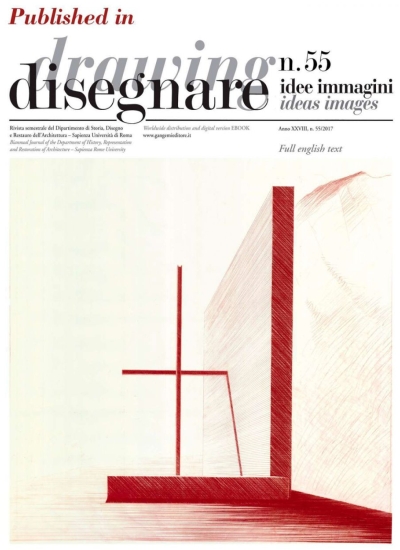 EDITORIALE. LA QUALITÀ DELLA RICERCA NELLE SCUOLE DI ARCHITETTURA ITALIANE
Published in Disegnare idee immagini 55/2017. Rivista semestrale del Dipartimento di Storia, Disegno e Restauro dell'Architettura Sapienza Università di Roma | Biannual Magazine of the Department of History, Drawing and Restoration of Architecture
EDITORIALE. LA QUALITÀ DELLA RICERCA NELLE SCUOLE DI ARCHITETTURA ITALIANE
Published in Disegnare idee immagini 55/2017. Rivista semestrale del Dipartimento di Storia, Disegno e Restauro dell'Architettura Sapienza Università di Roma | Biannual Magazine of the Department of History, Drawing and Restoration of Architecture
Mario Docci, Gangemi Editore
 EDITORIALE. LA QUALITÀ DELLA RICERCA NELLE SCUOLE DI ARCHITETTURA ITALIANE
Published in Disegnare idee immagini 55/2017. Rivista semestrale del Dipartimento di Storia, Disegno e Restauro dell'Architettura Sapienza Università di Roma | Biannual Magazine of the Department of History, Drawing and Restoration of Architecture
EDITORIALE. LA QUALITÀ DELLA RICERCA NELLE SCUOLE DI ARCHITETTURA ITALIANE
Published in Disegnare idee immagini 55/2017. Rivista semestrale del Dipartimento di Storia, Disegno e Restauro dell'Architettura Sapienza Università di Roma | Biannual Magazine of the Department of History, Drawing and Restoration of ArchitectureMario Docci, Gangemi Editore
4,99 €
DISEGNARE IDEE IMMAGINI N° 57 / 2018
Rivista semestrale del Dipartimento di Storia, Disegno e Restauro dell'Architettura Sapienza Università di Roma
Rivista semestrale del Dipartimento di Storia, Disegno e Restauro dell'Architettura Sapienza Università di Roma
14.99 €
39
-41
 DISEGNARE IDEE IMMAGINI N° 57 / 2018
Rivista semestrale del Dipartimento di Storia, Disegno e Restauro dell'Architettura Sapienza Università di Roma
DISEGNARE IDEE IMMAGINI N° 57 / 2018
Rivista semestrale del Dipartimento di Storia, Disegno e Restauro dell'Architettura Sapienza Università di Roma
Mario Docci, Gangemi Editore
 DISEGNARE IDEE IMMAGINI N° 57 / 2018
Rivista semestrale del Dipartimento di Storia, Disegno e Restauro dell'Architettura Sapienza Università di Roma
DISEGNARE IDEE IMMAGINI N° 57 / 2018
Rivista semestrale del Dipartimento di Storia, Disegno e Restauro dell'Architettura Sapienza Università di RomaMario Docci, Gangemi Editore
14,99 €
LA TRASMISSIONE DELLA CONOSCENZA REGISTRATA
Scritti in onore di Mauro Guerrini offerti dagli allievi
Scritti in onore di Mauro Guerrini offerti dagli allievi
16.99 €
39
-41
 LA TRASMISSIONE DELLA CONOSCENZA REGISTRATA
Scritti in onore di Mauro Guerrini offerti dagli allievi
LA TRASMISSIONE DELLA CONOSCENZA REGISTRATA
Scritti in onore di Mauro Guerrini offerti dagli allievi
Carlo Bianchini, Editrice Bibliografica
 LA TRASMISSIONE DELLA CONOSCENZA REGISTRATA
Scritti in onore di Mauro Guerrini offerti dagli allievi
LA TRASMISSIONE DELLA CONOSCENZA REGISTRATA
Scritti in onore di Mauro Guerrini offerti dagli allieviCarlo Bianchini, Editrice Bibliografica
16,99 €
IN VIAGGIO NELLA CITTÀ DEL LIBRO
La storia delle biblioteche veneziane e il progetto PRIN2022 LIBMOVIT
La storia delle biblioteche veneziane e il progetto PRIN2022 LIBMOVIT
11.99 €
45.43346985
12.3391968
15
 IN VIAGGIO NELLA CITTÀ DEL LIBRO
La storia delle biblioteche veneziane e il progetto PRIN2022 LIBMOVIT
IN VIAGGIO NELLA CITTÀ DEL LIBRO
La storia delle biblioteche veneziane e il progetto PRIN2022 LIBMOVIT
Fiammetta Sabba, Ledizioni
navy
 IN VIAGGIO NELLA CITTÀ DEL LIBRO
La storia delle biblioteche veneziane e il progetto PRIN2022 LIBMOVIT
IN VIAGGIO NELLA CITTÀ DEL LIBRO
La storia delle biblioteche veneziane e il progetto PRIN2022 LIBMOVITFiammetta Sabba, Ledizioni
11,99 €


